DISCLOSURE: VT condemns the horrific tragedy committed by the NAZI Party against Jewish Citizens of Europe during Word War II known as the "Holocaust". VT condemns all racism, bigotry, hate speech, and violence. However, we are an open source uncensored journal and support the right of independent writers and commentors to express their voices; even if those voices are not mainstream as long as they do NOT openly call for violence. Please report any violations of comment policy to us immediately. Strong reader discretion is advised.
…by Jonas E. Alexis

Just recently, Hilary Clinton has proved herself to be a Zionist buffoon when she likened Putin’s “actions on the Crimean peninsula of Ukraine to those of Adolf Hitler in the 1930s.”[1]
If Hitler didn’t exist, the Zionist and neo-Bolshevik world would have almost certainly invented him. They have beaten the entire world over the head with that name while at the same time absolve themselves from any responsibility whatsoever.[2]
One individual who has seen this as an exploitation of what happened in history is Jewish member of Britain’s parliament Sir Gerald Kaufman. He wrote,
“The current Israeli government ruthlessly and cynically exploits the continuing guilt among gentiles over the slaughter of Jews in the Holocaust as justification for their murder of Palestinians.
“My grandmother was ill in bed when the Nazis came to her home town. A German soldier shot her dead in her bed. My grandmother did not die to provide cover for Israeli soldiers murdering Palestinian grandmothers in Gaza.”[3]
Kaufman certainly has a point. For example, over 6,500 precious civilians have left Syria in the last three days alone,[4] but do the neo-Bolsheviks really care about where those precious people will land in the next few weeks or so?

No. They have more damage to do in Ukraine. And when Russia responds rationally and methodically,[5] Russia is the aggressor!
Yet there is still a sinister plan behind all this psychological and political warfare here. As Paul Craig Roberts points out,
“According to a report in Kommersant-Ukraine, the finance ministry of Washington’s stooges in Kiev who are pretending to be a government has prepared an economic austerity plan that will cut Ukrainian pensions from $160 to $80 so that Western bankers who lent money to Ukraine can be repaid at the expense of Ukraine’s poor.”[6]
It has been suggested that US-backed opposition was largely responsible for collaborating with snipers who shot at protesters in Kiev,[7] and there is no doubt that the intelligence community had something to do with the political process Ukraine.[8] But that again is no big problem with the neo-Bolsheviks. You don’t allow the neo-Bolsheviks to establish their heaven on earth?
Well, you are a Nazi. They have the entire media to convey this message ad absurdum. You have the entire neo-Bolshevik media falsely blaming the Assad government for using chemical weapons on its own people but say very little about the Syrian rebels/terrorists.[9]
How did we get to this point? Well, those irrational ideas cannot be explained by looking at the current political process precisely because subversive revolutionary ideology goes far deeper.
One simply cannot understand revolutionary ideology without historical context, and one cannot understand the age-old question without going back to the first century and the events leading up to the destruction of the Jewish Temple in A.D. 70. Only then will we have a better picture of the situation in Ukraine and elsewhere.
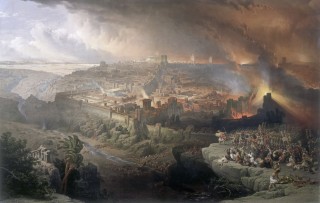
Before his crucifixion, Christ prophesied that he would come and judge first-century Israel for her continued rebellion, and many historians, including first-century Jewish historian Josephus, later conceived that the destruction of the Temple in A.D. 70 was a fulfillment of that prophecy.[10]
The Roman army, under the command of Titus, literally destroyed the Temple, never to be reconstructed again. Josephus told us that Titus had no intention of destroying the Temple. Titus even sent Josephus to talk to the Zealots in giving up their rebellion before he attacked the city, but it was of no avail.
One Judaean who understood that surrender was the only option for the Judaeans to achieve peace was Josephus, who later The Jewish War. Prior to AD 70, he had been involved in a reluctant rebellion against Rome, but seeing that there was no way that the Judaean would win a suicidal war, he became a friend of Rome and fully assimilated.
When the Temple was finally destroyed, depression, despair, and most importantly fear grabbed the Jewish people. Heinrich Graetz called the destruction of the Temple “suicidal”[11] because it led to catastrophic disaster for the Jewish people.
No one in ancient history could have predicted that the temple was going to be destroyed because of its magnificence and splendor. The Jewish philosopher Philo (20 B.C. – 50 A.D.) thought that the temple was so important and rich in splendor as well as in “revenues” that it would be in existence “as long as the race of mankind shall last.”[12]
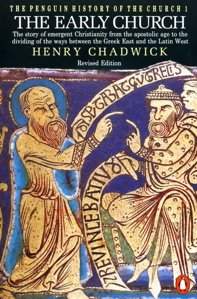 Both Josephus and Tacitus testified that the temple was one of the great wonders of the ancient world. Tacitus described it as “famous beyond all other works of men.”[13]
Both Josephus and Tacitus testified that the temple was one of the great wonders of the ancient world. Tacitus described it as “famous beyond all other works of men.”[13]
Solomon Grayzel declares that “its simple grandeur impressed every visitor, and it became known far and wide as one of the wonders of the ancient world.”[14] It was not just a beautiful monument. Religiously, it was sacred.[15]
Yet even though Philo thought the Temple was indestructible, it was ruined in A.D. 70. After that, many Jews thought that “God had abandoned them, that His sacred building, the Shrine of His people, was in flames.”[16]
Graetz declares that there were “trembling people from all the country round, who beheld in the ascending flames the sign that the glory of their nation had departed forever. Many of the inhabitants of Jerusalem, unwilling to outlive their beloved Temple, cast themselves headlong into the burning mass.”[17]
According to the Talmud, this is why Titus, Jesus and Balaam are all burning in excrement in hell.[18]
After that catastrophic event, which took the lives of thousands of Jews, several attempts were made to rebuild the Temple; all failed.
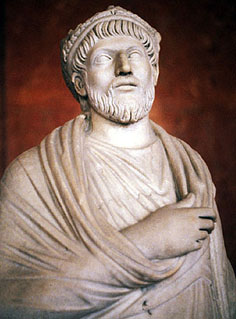
In the fourth century, Flavius Claudius Julianus, known as Julian the Apostate, the last pagan Roman emperor, ordered the Temple to be rebuilt with state funds,[19] and Jews throughout the region gathered together to see it done. Protestant church historian Philip Schaff noted,
“The Jews now poured from east and west into the holy city of their fathers, which from the time of Hadrian they had been forbidden to visit, and entered with fanatical zeal upon the great national religious work, in hope of the speedy irruption of the Messianic reign and the fulfillment of all the prophecies.”[20]
Julian was aware of Christ’s words that the Temple would be destroyed forever, and was anxious to prove Christ wrong.
In a letter entitled “To the Community of the Jews,” Julian made it clear that he would “use all my zeal to make the temple” rise to its feet once again, where priests and rabbis would be able to perform sacrifices and where Christianity would be proven wrong.[21] Julian declared,
“The high priest of the Hellenes would embarrass the god of the Galileans [Christians] on his own terrain, making Him [Christ] to be a charlatan.”[22]
Not only that, in Against the Galileans, Julian put forth a frontal attack against Christianity, accusing Christians of all sorts of things, including impiety and atheism.[23]
Julian, in the words of late Cambridge historian J. B. Bury, attempted to revive “old and expiring paganism.”[24] For this reason, Julian “excites the interest of mankind,”[25] particularly those who want to challenge some of the prophecies made in the New Testament.
In 344, seventeen years prior to Julian becoming an emperor, Constantius sent Julian into obscurity in Macellum, which was a luxurious palace, though Julian called it a prison.
There he met with Christian clergy, from whom he acquired some “superficial knowledge of the Scriptures,”[26] and it is highly probable that Julian may have learned about the prophecies made by Christ in that palace. Julian already despised Christianity after he saw his relatives murdered by Christian relatives.
It is said that he never recovered from that nightmare and carried that bitter hatred with him for much of his life. That nightmare transformed itself into a complete hatred of Christianity, the ultimate hatred, and this almost certainly precipitated Julian toward blatant paganism, considering the fact that the man who murdered his family, Constantius II, was a professing Christian.[27]
While he was in obscurity and learning the philosophy of Socrates, Plato, Aristotle, and other Greek writers and thinkers, his eyes were fixed upon paganism, declared Ammianus Marcellinus, one of his close friends.[28]
 When he returned from obscurity after six years, Julian—an erudite student by that time—sought those who took paganism seriously, “who had easy access to the ears of the gods,” and who could “command winds, waves, and earthquakes.”[29] One of those individuals was Aedesius, “who was said to receive oracles from the deities by night.”[30]
When he returned from obscurity after six years, Julian—an erudite student by that time—sought those who took paganism seriously, “who had easy access to the ears of the gods,” and who could “command winds, waves, and earthquakes.”[29] One of those individuals was Aedesius, “who was said to receive oracles from the deities by night.”[30]
Another individual who greatly influenced Julian was Maximus, one of the most well-known mediums of the fourth century, who had the ability to perform séances and call upon the deities with remarkable success.
Julian was particularly interested in seeing Maximus because Julian’s friend, Eusebius of Myndus, a Neo-Platonist, told him stories about Maximus’ occult techniques. “He made a number of us descend into the temple of Hecate,” Eusebius declared.
“There he saluted the goddess. Then he said: ‘Be seated, friends, see what happens, then judge whether I am not superior to most men.’ We all sat down. He burnt a grain of incense and chanted a whole hymn in a low voice. The statue began to smile, then to laugh. We were afraid at the sight.”[31]
Julian was impressed, and within a short time Maximus became one of Julian’s advisors. He also was initiated into the ritual theurgy, a pagan occult ceremony during which prayers to deities are chanted. During initiations, participants usually become possessed.
Moreover, the deities always give signs of their presence.[32] In the nineteenth century, nihilistic philosophers such as Friedrich Nietzsche were well aware of this phenomenon and would try to harness that power to unleash it upon mass culture.[33]
Julian became frightened as he began to see those signs and apparitions during his initiation. After the occult initiation, it is reported that Julian became possessed and was thus the servant of the deities.[34]
From that time on, Julian became a full-blown pagan and communicated with the deities through divination.[35] Convinced that he was guided by them, Julian became more and more aware that his actions and fate were all determined by divine oracles and voices.
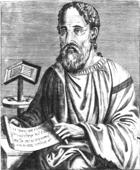
By this time, Julian began to view Christianity as a barbarian cult and began to repudiate whatever Christian education he had previously learned. Later, he got initiated into pagan cults and ancient mysteries such as the worship of Mithras.[36]
Yet all of that was done in private. In public Julian would threaten with torture anyone who dared practice divination, but in private he was calling on the deities with the adepts.[37] Julian’s dream seemed to have come true when Constantius died in 361 and he was made emperor.
To his surprise, most of his soldiers now revered paganism and practiced it. He wrote a letter to Maximus declaring,
“We worship the gods openly; most of the soldiers who follow me reverence them! We have thanked the gods in the sight of men with many hecatombs [sacrifices to the gods].”[38]
Julian continued to practice those sacrificial rituals for years, calling on all the gods such as Saturn, Jupiter, Apollo, Mars, Pluto, Bacchus, Silenus, Aesculapius, Castor and Pollux, Rhea, Juno, Minerva, Latona, Venus, Hecate, Mithras, and Dionysus.[39]
By his own admission, Julian saw that blatant persecution of Christians had not been a success in the past and was not the right method to conquer Christianity.[40] Constantitus, the previous emperor, had banned all bishops. Julian issued an edict allowing them to come back, resuming “possession of their confiscated property but not their sees.”[41]
 Not only that, Julian summoned all the clerical leaders of various beliefs from within Christianity, telling them that they were free to practice Christianity under no threat of torture. Julian’s admirer, Ammianus Marcellinus, saw this as a divide-and-conquor strategy.
Not only that, Julian summoned all the clerical leaders of various beliefs from within Christianity, telling them that they were free to practice Christianity under no threat of torture. Julian’s admirer, Ammianus Marcellinus, saw this as a divide-and-conquor strategy.
Since the leaders had different forms of practicing their faith, Julian reasoned that they would end up quarreling among themselves, which would eventually destroy the Christianity from within. That strategy failed and it ended up strengthening the faith of the believers.
Julian then tried to apply other failed methods, such as forbidding Christians to teach in public schools where Greek and Roman literature provided the background of education. He insisted that if Christians were going to teach such books, they must be willing to embrace the religion of the authors.He wrote,
“Homer, Hesiod, Demosthenes, Thucydides, Isocrates, Lysias, all founded their learning on the gods. Did not some of them believe themselves to be consecrated to Hermes and others to the muses? It seems therefore absurd to me that those who explain their works should not worship the gods they reverenced.”[42]
(Julian had forgotten that his teacher was Christian.) That edict was a complete disaster because two of the most erudite and prodigious teachers of the time were Christians—Prohaeresius of Athens and C. Marius Victorians of Rome.
Once the edict was given, they both resigned from their posts, which meant that the public schools had lost two of their most qualified teachers. A third prodigious Christian teacher was Libanius.
Julian did his best to win him over to paganism, but failed. He finally allowed Libanius to teach without adopting the pagan gods whom the Greek writers revered.
Since Christians were no longer allowed to teach in the public schools, they began to study the Greek language and write books in the same language, which could serve as a replacement of the Greek writers.[43]
Julian also wanted pagan priests to set up charitable organizations in order to compete with the “Galileans.”[44] In 362 he complained to a pagan priest that Christians were gaining the upper hand because of their “moral character, even if pretended,” and that their “benevolence toward strangers and care for the graves of the dead” attracted people to the Christian movement. He continued,
“I think that when the poor happened to be neglected and overlooked by the priests, the impious Galileans observed this and devoted themselves to benevolence. The impious Galileans support not only their poor, but ours as well; everyone can see that our people lack aid from us.”[45]
But Julian quickly found out that paganism, as Rodney Stark put it, lacked “the kind of voluntary system of good works that Christians had been constructing for more than three centuries.”[46]
Julian was disappointed by his inability to persuade people to see the true value of paganism. For example,
“In Galatia, at Pessinus where stood a famous temple erected to the Great Mother, he had to bribe and threaten the inhabitants to do honour to the goddess.
“At Beroea he harangued the municipal council on the duty of worshipping the gods. ‘They all warmly praised my discourse,’ he says somewhat sadly, ‘but none were convinced by it save the few who were convinced before hearing.’”[47]
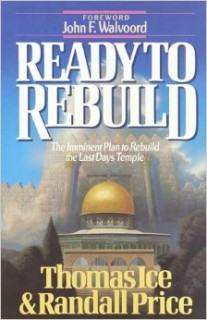 Ammianus Marcellinus, himself a pagan and a biographer of Julian, thought that Julian’s effort to unite paganism in the Roman Empire with the common people in particular was, according to Bury, “a devout imagination not worth the trouble he wasted on it.”[48]
Ammianus Marcellinus, himself a pagan and a biographer of Julian, thought that Julian’s effort to unite paganism in the Roman Empire with the common people in particular was, according to Bury, “a devout imagination not worth the trouble he wasted on it.”[48]
His effort only attracted “the narrow circle of Neoplatonist sophists, and they had no influence with the people.”[49] Julian called his effort “Hellenism,” but that effort failed for various reasons.
At its root, paganism lacked the ontological mechanism to transform life from the inside out. Christians were willing to help the poor and needy even though they were putting their lives in danger.
The pagans in general did not have that transformational mechanism, a system of self-denial which was solely based on the teachings of Christ. A classic example would by Polycarp, who was martyred in 156 A.D.
When the soldiers came to his house to arrest him,
“He came down and talked to them in the most cheerful and gentle manner, so that, never having seen him before, they could hardly believe their eyes when confronted with his advanced years and dignified confident bearing.
“Why, they wondered, was there such anxiety to arrest an old man of this kind? He meanwhile ordered the table to be laid for them immediately, and invited them to eat as much as they liked, asking in return a single hour in which he could pray unmolested.
“Leave being given, he stood up and prayed, full of the grace of the Lord, to the amazement of those who were present and heard him pray, many of them indeed distressed now by the coming destruction of an old man so dignified and so godlike.”[50]
Paganism, as Bury put it, with Julian as the chief proponent, did not have “the prophetic fire and inspiration—and Julian was no prophet.”[51] Julian’s paganism, in its essence, “lacked the living principle of growth, and could not last.”[52]
What turned out to be true was the prediction of a Christian by the name of Athanasius, whom Julian had exiled and persecuted. Julian’s paganism, Athanasius said, “will soon pass.”[53]
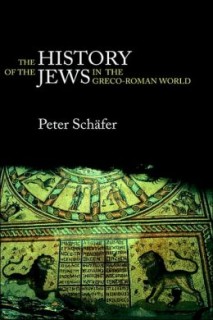 Henry Chadwick called Julian’s aspiration to rebuild the temple a “political, quasi-Zionist proposal”[54] which never saw the light of day. If Julian could rebuild the Temple, then Christ’s prophecy would be shown to be a fraud, and Christians would have no good reason to trust the other things that Christ taught.
Henry Chadwick called Julian’s aspiration to rebuild the temple a “political, quasi-Zionist proposal”[54] which never saw the light of day. If Julian could rebuild the Temple, then Christ’s prophecy would be shown to be a fraud, and Christians would have no good reason to trust the other things that Christ taught.
Julian was on a mission. Christianity is based on the veracity and truthfulness of its founder, and Rabbinic Judaism was solely dependent upon the Temple. As Princeton Jewish scholar Peter Schafer puts it, “Judaism has been centered for centuries around the Temple cult as the focal point of religious life,” and that the destruction of the Temple had a devastating effect on Judaism in general.[55]
Therefore, for the religious survival of Rabbinic Judaism, the Temple had to be rebuilt. As one scholar put it,
“Julian’s enterprise was that the rebuilding of the temple would prove false the prophecy of Jesus that not one stone of the temple would be left upon another. The falsification of this prophecy would constitute a blow to the credibility of Christians.”[56]
Another scholar declares, “There was probably anti-Christian sentiment to the plan [rebuilding the Temple]”[57] because Julian “sought to undermine” Christianity “without resorting to outright persecution.”[58]
In other words, Julian sought “to weaken Christianity” and substituted paganism in its stead,[59] and to do that he had to ally with the Jews. Julian even wrote a letter entitled “To the Community of the Jews,” trying to gain their confidence and thus make friends with them.[60] As E. Michael Jones puts it, Julian
“knew Jews were the main opponents of Christianity; Jews were also involved in every persecution. So he decided to use them to refute Christianity once and for all.”[61]
At first, things seemed to prosper. Jewish women “used their garments to help carry away the earth removed by diggers busy with making room for the new foundation.”[62]
Julian the Apostate and his Jewish allies were getting the upper hand.
“But as the foundations were being dug, flames burst from the ground, and burnt several workmen to death. The work was patiently resumed, but a repetition of phenomenon—probably due to the explosion of natural gas—interrupted and discouraged the enterprise.”[63]
Even the night before constructions began, historian Eusebius tells us,
“there arose a huge storm, the earth shook, and huge balls of fire burst forth from the ground and continued to do so through the next day. Instruments melted, workers were burnt to death, strange crosses appeared on clothes and bodies, a luminous cross shone in the sky, and the enterprise had to be abandoned. A violent tremor caused a portico to collapse, killing a number of workers.”[64]
Another Christian named Gregory of Nazianzen, who “was never charged of falsifying or inventing facts” by the pagans and critics of the day,[65] wrote of the Jewish women who were working on the rebuilding of the temple when the incident happened:
“A sudden whirlwind and the convulsion of the earth caused them to rush to a nearby church…as they reached the door of the church which was open, suddenly those doors closed, as if by an invisible hand, which filled with fear the impious and protest the devout.
“It is reported unanimously and held for certain that when they tried to open the door of the church, flames that burst forth from the inside prevented them from forcing the door open.
“The flames then burnt some of them and destroyed others…Still others lost various limbs of their bodies to the flames that burst from inside the church and burnt some of them to death.”[66]
Ambrose and Ammianus Marcellus seem to have confirmed Gregory’s testimony.[67] Some scholars like G. W. Bowersock declare that the event was probably an earthquake and therefore a natural phenomenon, as if Ambrose and Ammianus did not know what an earthquake was. Then Bowersock proposed another implausible scenario:
“Sabotage in the form of engineered miracle is also a possibility with a range of candidates, Christian and Jewish, who might have wished to terminate the project.”[68]
What Jew would try to interrupt such a work and what would they gain in return? And what are the consequences for doing so—particularly if caught? What Christian would be involved in sabotaging the work of the emperor Julian, particularly when history tells us that Christians during that era were known to be docile? Bowersock never explains this.
Christ’s word, as it turned out, was vindicated. As Schaff himself put it,
“the united power of heathen emperor and Jewish nation was insufficient to restore a work which had been overthrown by the judgment of God.”[69]
Julian and the Jewish people went back to a state of despair and fear. “Julian, formerly ‘madly eager’ to finish the project, was suddenly filled with fear, afraid fire might fall on his own head too. So ‘he and the whole Jewish people withdrew in defeat.’”[70]
Ammianus had no good explanation as to how fire burst from the ground and gave no reason to believe that it happened naturally. Sensing his shame, Julian blamed the Christians of setting the fires in order to stop the construction, despite the fact he could not find a single Christian responsible.
Just before he died, Julian eventually conceded defeat, saying, “Thou hast triumphed, O pale Galilean.” Another account had him crying out, “Helios, thou hast ruined me!”[71]
Yet some philo-Semitic historians have failed to mention some of the key events that led to the ending of the construction of the temple. Justo L. Gonzalez writes without any clarification or further details that the temple projects “were moving along as rapidly as possible, when death overtook him [Julian] quite unexpectedly.”[72]
Nothing was said about what happened the night before construction, and nothing was said about Julian’s despair that the temple was a failed attempt.
Likewise, Paul Johnson did not even mention the alliance between Julian and the Jews with respect to rebuilding the temple in his popular book History of the Jews.[73]
Yet it could hardly be ignored, for both Christian and pagan writers wrote about it as a major event. Gregory of Nazianzen declared that the event was so catastrophic that
“on seeing this, they [the Jews] were so terrified as to invoke in one voice the God of the Christians and tried to expiate Him with many praises and supplications.”[74]

Yet despite Julian’s failed attempt, the idea did not die out in the fourth century. Fast forward centuries later, where Dispensational Premillenialists and Christian Zionists have been at the forefront of saying that rebuilding the temple is right in line with “Bible prophecy.”
This was so politically expedient during the Nixon era that one of Charles Colson’s friends in the White House, a flaming Zionist who would lecture U.S. officials about eschatology, arranged
“the clandestine demolition of the Dome of the rock, an Islamic shrine in Jerusalem, to make way for the prophesied rebuilding of the Jewish temple.”[75]
As we shall see, some of the tenets of Dispensational Premillenialism are based on the premise that the Temple must be rebuilt. By proposing such a radical and Talmudic agenda, Dispensationalists seem to have learned little from history and seem to be following in the footsteps of Julian the Apostate. Were he alive today, perhaps Julian would be stunned to see people like John Hagee trying to revive a failed revolt.
Dispensationalists Randall Price and Thomas Ice admitted that “There are no Bible verses that say, ‘There is going to be a third temple.’”[76] Yet that did not stop them from marshalling the ridiculous idea that there will be a third temple.
Again, sola scriptura, as we shall emphasize in a later article, is a smokescreen which was thoroughly convenient during the time of Martin Luther and all the way to the twenty-first century.
Yet when it comes to providing exegetical references from the New Testament for the idea of a rebuilt Temple, Price declares that one would not find the emphasis of a rebuilt Temple because “New Testament authors would have assumed this doctrine and expected their audience to understand it from the Old Testament text.”[77]
Can Price be really serious? If we want to go by sola scriptura and if a doctrine is so vital to dispensational premillennialism, why did Paul, Peter, Matthew, Mark, Luke, John, and others completely fail to emphasize it? Why is there not a single verse in the New Testament that even remotely makes a suggestion of a rebuilt Temple?
The only place we find a calling for a rebuilt Temple is in Rabbinic-Judaic literature.[78] The Encyclopedia of Jewish Religion tells us that
“the synagogue prayer called the Eighteen Benedictions begs God to reinstate the temple service and to return the Divine presence of Zion. It adds this petition: ‘May it be Thy will that the temple be rebuilt soon in our days.’
“Thus traditional Judaism has continued to pray for the rebuilding of the temple. Reform Judaism, however, has omitted these prayers for the rebuilding of the temple and the restitution of the sacrificial system.”[79]
What we are seeing again and again is that Price and others do not really believe in sola scriptura. They resort to that system when it suits them, but go off on another tack when the text does not validate their claim.
 For example in 1 Corinthians 3:10-12, we read:
For example in 1 Corinthians 3:10-12, we read:
“According to the grace of God which is given unto me, as a wise masterbuilder, I have laid the foundation, and another buildeth thereon. But let every man take heed how he buildeth thereupon.
“For other foundation can no man lay than that is laid, which is Jesus Christ. Now if any man build upon this foundation gold, silver, precious stones, wood, hay, stubble; Every man’s work shall be made manifest: for the day shall declare it, because it shall be revealed by fire; and the fire shall try every man’s work of what sort it is.”
How does Price, a man who has knowledge in Semitic languages, interpret and exegete those passages? Listen carefully:
“It has been suggested that Paul’s depiction of his own role in verse 10 as a ‘master builder’ (Greek architeckton) may have been part of the vocabulary of ancient building contracts for temples.
“Whatever the case, he certainly means more by it than common building construction, as the context reveals. While it is true that Paul’s list of six building materials in verse 12 is given in a descending scale of values, cost is not the issue but perishability.
“Yet even here, these represent the permanence of Christ versus the impermanence of Gentile (human) ‘wisdom’ within the context of the Temple imagery…
“While it is the work rather than the building that is tested by fire, the association must have in mind the historic destruction of the First Temple by fire, since the desecration of the Temple and the consequence of divine retribution are the subject of verse 17.”[80]
Just in case readers miss the message, Price reiterates it in another page: “Again, Paul’s definite reference here to ‘the temple of God’ refers to the Jerusalem Temple, not the church.”[81]
Had Price not been locked into his own dispensationalist/Zionist system, he would have certainly seen a different picture, since the rest of the passage—verses 13-23—makes it clear that Paul was not talking about a rebuilt Temple. For example, verses 16 and 17 declare:
“Know ye not that ye are the temple of God, and that the Spirit of God dwelleth in you? If any man defile the temple of God, him shall God destroy; for the temple of God is holy, which temple ye are.”
Moreover, Price and other dispensationalists could never bring themselves to the fact that if the Temple is rebuilt, then animal sacrifices would have to begin again, which means that Christ’s sacrifice on the cross would be of no effect.
What’s more frightening is that the book of Hebrews makes it very clear that animal sacrifices have been done away with. As Protestant writer Gary Demar himself puts it,
“[The] millennial temple would require Jesus to officiate over the very animal sacrifices that He shed His blood to replace. How does futurist (dispensationalist) get around this obvious theological problem?
“The New Scofield Reference Bible understands this dilemma. The editors of the 1909 version give two possible interpretations: ‘(1) Such sacrifices, if actually offered, will be memorial in character….(2) the reference to sacrifices is not to be taken literally.”[82]
Demar concludes: “The temple, earthly priesthood, and animal sacrifices were designed to pass into oblivion when the promised High Priest, Jesus, offered Himself as the perfect and final sacrifice. All other sacrifices, no matter how well intentioned, would be an abomination in the light of the cross of Christ.”[83]
The Temple never got rebuilt during the time of Julian and beyond, even though apocalyptic visions and messianic politics did not die out in the fourth century.[84] Yet the revolutionary spirit once again never rested on the destruction of the Temple.
In a nutshell, when the Temple was destroyed, fear grabbed the Jewish people. Over time, they began to see anti-Semitism just about everywhere and behind every bush. In the twenty-first century alone, this has been a consistent pattern.[85]
For example, right after John B. Judis’ book came out (Genesis: Truman, American Jews, and the Origins of the Arab-Israeli Conflict), David Horowitz of FrontPage Magazine emailed the author and said that he had “become a supporter of the Nazis”![86]
More recently, fear has taken a toll on Jewish professor Michael Curtis of Rutgers University. Curtis is troubled because he sees that the internet can be used as a powerful force for change. He writes,
“A new specter is haunting the world, the specter of the internet. Through Facebook, You Tube, Twitter, and web sites, images and sounds reach people on a scale much larger and previously unimaginable than the printed media has ever attained. Everyone today can be a writer or an artist if one joins one of the networks, and anyone on the globe can read or see those messages.
“It is now much more difficult to have the capacity to monitor published words and images for criminal messages on the different sites. The very scale of the internet makes the need for vigilance more acute.”[87]
How sad that fear get the best of grownups like Curtis. And how sad that they have to monitor the entire internet in order to feel safe and create a program “that collected information on the private communications of millions of totally innocent Americans, a dramatic change in approach carried out without popular input or consent.”[88]
 Had it not been for its theological nucleus—Rabbinic Judaism, which had and still has many political and revolutionary offshoots such as Marxism, Bolshevism, Neoconservatism, and Zionism—Jewish subversive movements would not have happened in Europe and beyond.
Had it not been for its theological nucleus—Rabbinic Judaism, which had and still has many political and revolutionary offshoots such as Marxism, Bolshevism, Neoconservatism, and Zionism—Jewish subversive movements would not have happened in Europe and beyond.
As the old saying goes, the more things change, the more they stay the same. We no longer have Stalin, but the spirit of Bolshevism, which has taken a new life in the ideological disputation of Zionism, has gripped the West in a subtle or subliminal way by playing double standard without any serious repercussion.[89]
For example, if Stalin had the power to monitor virtually the entire world, he would have surely done so. Here is a question that readers would answer very quickly: which country or countries over the last decade have targeted other sovereign countries such as Venezuela, Bolivia, Ecuador, Brazil, Russia, China, Iran and, of course, Syria?[90]
In a nutshell, the offspring of Rabbinic Judaism has taken different shapes and forms over the centuries, but its substance has remained the same: it seeks to overthrow the moral and political order.
And if you listen to many of the leading revolutionaries, you will indirectly hear the same thing over and over. Keep in mind what Eli Roth said last year: his movie series will “fu$k up an entire generation.”[91]
In other words, if an entire generation is not screwed up, Roth will not be happy. Willi Munzenberg once again put it more precisely:
“We must organize the intellectuals and use them to make Western Civilization stinks! Only then, after they have corrupted all its values and made life impossible, can we impose the dictatorship of the proletariat.”[92]
Munzenberg perhaps knew that intellectual ideas attract only a few people. Jean Paul Sartre and Albert Camus for example did not waste their time postulating philosophical arguments in the form of syllogism which would lead to metaphysical conclusions.
Sartre did attempt to do that in a few books but that only attracted a few individuals. Instead, he and Camus used drama and theatrical sketch to establish their highly existential point. Scholar Bram Dijkstra tells us:
“There is no more accurate documentation of the manner in which a culture perceives its moral and social mission than in the works of visual art it produces.”[93]
This has been supported by numerous studies.[94] So, if a revolutionary idea can be transformed into the visual art—namely movies, films and other media outlets—then those who control the media will control the culture. As Scottish writer Andrew Fletcher put it in a similar tone,
“If a man were permitted to make all the ballads, he need not care who should make the laws of a nation.”[95]
Now who controls Hollywood and the media? Who writes and directs tasteless and degenerate movies such as The Human Centipede (I and II), Cosmopolis, Nymphomanic, 2001 Maniacs? Vladimir Putin? Kim Jong-un? Bashar al-Assad? Hassan Rouhani? Perhaps we should let Joel Stein of the LA Times answer those questions.[96]
To conclude, we still need to delve into the past and see how the overthrow of the political and moral order played out in the French Revolution, which has Freemasonry as its metaphysical substratum. We shall discuss this issue in the following article.
[2] For a good article on this obvious double standard, see for example Andranik Migranyan, “Putin Triumphs in Ukraine,” National Interest, March 6, 2014.
[3] Quoted in Daphna Vardi, “MP Kaufman Likens Israelis to Nazis,” Jewish Telegraphic Agency, January 16, 2014.
[4] http://www.aa.com.tr/en/rss/296398–40-killed-by-regime-forces-in-syria.
[5] Tom Switzer, “Putin’s Side of History,” American Conservative, March 5, 2014.
[6] http://www.informationclearinghouse.info/article37876.htm.
[7] “Kiev snipers hired by Maidan leaders – leaked EU’s Ashton phone tape,” Russia Today, March 5, 2014.
[8] See for example Josh Gerstein, “DNI Defends U.S. Intelligence on Ukraine,” Politico, March 5, 2014.
[10] See for example Kenneth L. Gentry, Before Jerusalem Fell: Dating the Book of Revelation (Atlanta: American Vision, 1998).
[11] Graetz, History of the Jews, 2:6.
[12] See Gentry, Olivet Discourse Made Easy, chapter 3.
[13] Ibid.
[14] Grayzel, History of the Jews, 115.
[15] Ibid., 116-120.
[16] Ibid., 171.
[17] Graetz, History of the Jews, 2:308.
[18] See Peter Schafer, Jesus in the Talmud (Princeton: Princeton University Press, 2007).
[19] Will Durant, The Age of Faith (New York: Simon & Schuster, 1950), 348.
[20] Philip Schaff, History of the Christian Church (Grand Rapids: Christian Classics Ethereal Library, 1882), 3:35.
[21] E. Michael Jones, The Jewish Revolutionary Spirit and Its Impact on World History (South Bend, IN: Fidelity Press, 2008), 73-74.
[22][22] Ibid., 65.
[23] Ibid.
[24] J. B. Bury, The Cambridge Medieval History (New York: MacMillan, 1911), 1:98.
[25] Ibid.
[26] Ibid., 1:99.
[27] Jones, Jewish Revolutionary Spirit, 57.
[28] Bury, Cambridge Medieval History, 1:99.
[29] Ibid.
[30] Ibid., 1:99-100.
[31] Ibid., 1:100
[32] For a detailed study, see E. R. Dodds, The Greeks and the Irrational (Berkley: University of California Press, 1951); for similar studies, see Mircea Eliade, Shamanism: Archaic Techniques of Ecstasy (Princeton: Princeton University Press, 1964); Charles Segal, Dionysiac Poetics and Euripides’ Bacchae (Princeton: Princeton University Press, 1982).
[33] See for example John Burt Foster, Heirs to Dionysus: A Nietzschean Current in Literary Modernism (Princeton: Princeton University Press, 1989); Eric Csapo and Margaret C. Miller, eds., The Origins of Theater in Ancient Greece and Beyond (Cambridge: Cambridge University. Press, 2007); Martin Persson Nilsson, The Dionysiac Mysteries of the Hellenistic and Roman Age (New York: Arno Press, 1975).
[34] Jones, Jewish Revolutionary Spirit, 59-60.
[35] Bury, Cambridge Medieval History, 1:100.
[36] Ibid., 1:101.
[37] Ibid., 1:102.
[38] Ibid.
[39] Ibid., 1:107.
[40] R. D. Lee, Pagans and Christians in Late Antiquity (New York: Routledge, 2000), 101.
[41] Bury, Cambridge Medieval History, 1:102-103.
[42] Ibid., 1:103.
[43] Ibid., 1:104.
[44] Ibid., 1:108.
[45] Rodney Stark, The Rise of Christianity: How the Obscure, Marginal Jesus Movement Became the Dominant Religious Force in the Western World in a Few Centuries (Princeton: Princeton University Press, 1996), 83-84.
[46] Ibid., 189; also Rodney Stark, The Triumph of Christianity: How the Jesus Movement Became the World’s Largest Religion (New York: HarperCollins, 2011), 118.
[47] Bury, Cambridge Medieval History, 1:110.
[48] Ibid.
[49] Ibid.
[50] Eusebius, The History of the Church from Christ to Constantine (New York: Dorset, 1983), 170
[51]Bury, Cambridge Medieval History, 1:111.
[52] Ibid.
[53] Ibid.
[54] Henry Chadwick, The Early Church (New York: Penguin, 1990), 156.
[55] Peter Schafer, The History of the Jews in the Greco-Roman World (New York: Routledge, 2003), 132.
[56] G. W. Bowersock, Julian the Apostate (Cambridge: Harvard University Press, 1997), 89.
[57] Shaun Tougher, Julian the Apostate (Edinburgh: Edinburgh University Press, 2007), 57.
[58] Ibid., 58.
[59] Ibid.
[60] R. Joseph Hoffmann, ed., Julian’s Against the Galileans (New York: Prometheus, 2004), 182-183.
[61] Jones, Jewish Revolutionary Spirit, 65.
[62] Ibid., 75.
[63] Durant, The Age of Faith, 348.
[64] Jones, The Jewish Revolutionary Spirit, 75.
[65] Ibid., 76.
[66] Ibid., 75; also Schaff, History of the Christian Church, 3:35-36.
[67] Jones, Jewish Revolutionary Spirit, 76.
[68] Bowersock, Julian the Apostate, 90.
[69] Schaff, History of the Christian Church, 3:35.
[70] Jones, Jewish Revolutionary Spirit, 77.
[71] Ibid., 78; also Schaff, History of the Christian Church, 3:36.
[72] Justo L. Gonzalez, The Story of Christianity (New York: HarperCollins, 1984), 1:172.
[73] E. Michael Jones pointed out Johnson’s bias first.
[74] Jones, Jewish Revolutionary Spirit, 76.
[75] Paul Boyer, When Time Shall Be No More: Prophecy Belief in Modern American Culture (Cambridge: Harvard University Press, 1992), 141.
[76] Thomas Ice and Randall Price, Ready to Rebuild: the Imminent Plan to Rebuild the Last Days Temple (Eugene: Harvest House Publishers, 1992), 197-198.
[77] Thomas Ice and Randall Price, Ready to Rebuild: The Imminent Plan to Rebuild the Last Days Temple (Eugene, OR: Harvest House, 1992), 596.
[78] See David Earl Holwerda, Jesus and Israel: One Covenant or Two? (Grand Rapids: Eardmans, 1995), 59-61; also Durant, Age of Faith, 356.
[79] Ibid., 60.
[80] Randall Price, The Temple and Bible Prophecy (Eugene, OR: Harvest House Publishers, 2005), 295.
[81] Ibid., 297.
[82] Gary Demar, Last Days Madness: Obsession of the Modern Church (Powder Springs, GA: American Vision, 1999), 97.
[83] Ibid., 99.
[84] See Norman Cohn, The Pursuit of the Millennium: Revolutionary Millennerians and Mystical Anarchists in the Middle Ages (New York: Oxford University Press, 1970).
[85] For a recent phenomenon, see for example Yossi Lempkowicz, “’Ukrainian Jews fear that the anger will be directed at the Jews, as has happened in the past,’” European Jewish Press, February 21, 2014; “Ukraine Chief Rabbi Accuses Russia of Staging Anti-Semitic ‘Provocations’ in Crimea,” Jewish Daily Forward, March 3, 2014.
[86] John B. Judis, “Conservative Critics Say My New Israel Book Is Anti-Semitic. They Must Not Have Read It Very Closely,” New Republic, February 26, 2014.
[87] Michael Curtis, “Holocaust Denial and the Internet,” The Commentator, February 21, 2014.
[88] Conor Friedersdorf, “A Key NSA Overseer’s Alarming Dismissal of Surveillance Critics,” Atlantic, February 27, 2014.
[89] See for example Paul R. Pillar, “Netanyahu’s Anti-Iranian Rant,” National Interest, March 4, 2014.
[90] http://www.informationclearinghouse.info/article37582.htm.
[91] Quoted in Stuart Dredge, “Netflix series Hemlock Grove: ‘People want their horror horrific,’ says Eli Roth,” Guardian, April 10, 2013.
[92] https://www.veteranstodayarchives.com/2013/09/24/sexual-decadence-weimar-germany/.
[93] Bram Dijkstra, Idols of Perversity: Fantasies of Feminine Evil in Fin-de-Sicle Culture (New York: Oxford University Press, 1986), 6.
[94] See for example Dorothy G. Singer and Jerome L. Singer, Imagination and Play in the Electronic Age (Cambridge:
Harvard University Press, 2005); Bradley M. Waite, Marc Hillbrand, and Hilliard G. Foster, “Reduction of Aggressive Behavior After Removal of Music Television,” Hospital and Community Psychiatry, Vol. 43, February 1992, 173-175; Frances S. Connelly, The Sleep of Reason: Primitivism in Modern European Art and Aesthetics, 1725-1907 (University Park, PA: Pennsylvania State Univ. Press, 1995).
[95] Andrew Fletcher, Political Works (Cambridge: Cambridge University Press, 1997), 179.
[96] Joel Stein, “Who Runs Hollywood? C’mon,” LA Times, December 19, 2008.
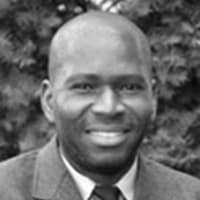
Jonas E. Alexis has degrees in mathematics and philosophy. He studied education at the graduate level. His main interests include U.S. foreign policy, the history of the Israel/Palestine conflict, and the history of ideas. He is the author of the new book Zionism vs. the West: How Talmudic Ideology is Undermining Western Culture. He teaches mathematics in South Korea.
ATTENTION READERS
We See The World From All Sides and Want YOU To Be Fully InformedIn fact, intentional disinformation is a disgraceful scourge in media today. So to assuage any possible errant incorrect information posted herein, we strongly encourage you to seek corroboration from other non-VT sources before forming an educated opinion.
About VT - Policies & Disclosures - Comment Policy



